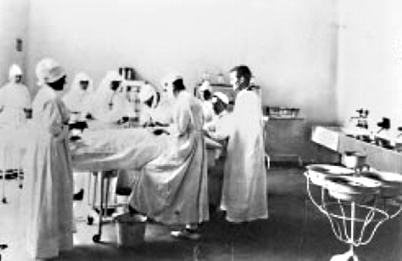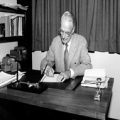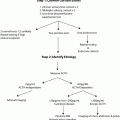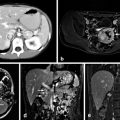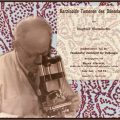Thomas Peel Dunhill (1876–1957) at the age of 29 when he began his work as physician to outpatients in 1905 at St. Vincent’s Hospital. From Thomas Peel Dunhill: Pioneer Thyroid Surgeon, Vellar, 1999. (Reprinted with permission, Copyright © 2002, John Wiley and Sons)
Introduction
In the mid-to-late nineteenth century, the management of severe thyrotoxicosis from exophthalmic goiter was a reflection of the lack of understanding of the disease process and the overall function of the thyroid [1–3]. At this time, exophthalmic goiter was treated medically with a wide range of homeopathic remedies including sodium chloride, sodium phosphate, and morphia, along with bed rest, a diet heavy in milk, and blood from thyroidectomized animals [2, 3]. The rare event of resolution or improvement in a patient’s condition was undoubtedly a result of spontaneous remission rather than such poorly understood medical interventions. In the meantime, patients would enter a state of thyroid crisis and become grossly emaciated, suffering from severe pulmonary and cardiac sequelae, blindness from corneal ulceration, and uncontrollable diarrhea and vomiting [2, 3]. Despite this horrid quality of life, leaders in thyroid surgery, including Kocher and Halstead, believed that surgery for patients with thyrotoxicosis placed the patient at too high of a risk to be beneficial [1, 4]. When surgery was attempted, patients suffered from either complications of chloroform anesthesia, postoperative thyroid storm, which was often fatal, or the inevitable recurrence of the thyrotoxicosis secondary to removing an insufficient amount of the thyroid gland [5]. Furthermore, at that time, complications from thyrotoxicosis, including heart failure and atrial fibrillation, were considered relative contraindications to surgery [5]. Although often overshadowed by his contemporaries, Thomas Peel Dunhill was integral in demonstrating the benefits of early surgical intervention for toxic goiter. Through his persistence and ingenuity, as well as his surgical technique, he was able to shift the global consensus towards subtotal thyroidectomy —total resection of one thyroid lobe and subtotal resection of the contralateral lobe.
Thomas Peel Dunhill was born on December 3, 1876, near Kerang in Victoria, Australia, to John Webster Dunhill, the manager of a sheep and cattle station, and his wife Mary Peel [2, 4]. When Thomas was 2 years old, his father died of typhoid fever, at which point Mary Peel brought him and his younger brother, John Webster Dunhill, back to her hometown of Inverleigh [2]. It was there, in 1888, that his mother remarried William Lawry, a local miner [2]. In 1892, Thomas began to study pharmacy, spending his days in a chemist shop at Daylesford and his evenings attending lectures at the Ballarat School of Mines [2]. His dedication to mastering the subject of pharmacology allowed him to become a registered pharmacist in 1898 [2]. By 1899, he had finally made enough money as a pharmacist and was able to enroll at the University of Melbourne to pursue his true passion: medicine [2, 6]. During his time there, he was regarded as an “outstanding student” and received first class honors in the subjects of medicine, surgery, and obstetrics [2]. After graduating from the clinical school of the Melbourne Hospital, he started his first resident house appointment at Melbourne Hospital at the age of 27 [6]. During his residency training, he was heavily influenced by his chief William Moore, and this is likely how he became interested in the management of patients who were dying from exophthalmic goiter of the thyroid [3]. In 1905, he had completed his surgical residency training, but, without the financial support from a wealthy family or the proper connections, he left Melbourne Hospital and graciously accepted an invitation from Mother Berchmans Daly (then the Mother Rectress) to join the medical staff at the newly built St. Vincent’s Hospital [2,3]. However, there were no surgical positions available at the time, so Dunhill was appointed physician to outpatients and was officially awarded his M.D. in 1906 [2, 6]. It was at this time, with the help of his chief, David Murray Morton, that Dunhill turned his attention to the management of patients with toxic exophthalmic goiter .
At the turn of the twentieth century, physicians, Dunhill included, were giving milk from thyroidectomized animals to thyrotoxic patients in an attempt to provide a factor that would neutralize the thyroid toxin [2, 3]. A similar short-lived practice was to inject a thyroidectomized animal with thyroid extract and then inject that animals’ serum into a thyrotoxic patient [3]. By 1907, Dunhill had realized the ineffective results of medical treatment for this disease in the patients suffering from thyrotoxicosis at St. Vincent’s Hospital [3]. Inspired by Kocher’s report in the British Medical Journal of using local anesthesia when operating on the thyroid and having seen the disastrous effects of the general anesthetic at the time (chloroform) on a thyrotoxic patient suffering from cardiac failure, Dunhill took his first step toward making his mark in history [6].
Unfortunately, Dunhill was limited by his position as an outpatient surgeon, and it was only with the assistance of David Murray Morton, who allowed Dunhill the use of a surgical bed, that Dunhill had the opportunity to take on his first patient. Mary Lynch was a 36-year-old Irish servant who had been suffering from exophthalmic goiter for months. She was not only out of work due to her persistent vomiting and emaciation but also so close to death that in the words of Dunhill himself, she “preferred any risk to remaining as she was” [3]. In July 1907, 2 years before Theodor Kocher received the Nobel Prize “for his works on the physiology, pathology and surgery of the thyroid gland,” Dunhill performed the fourth thyroidectomy ever done at St. Vincent’s by removing the right lobe of her thyroid under local anesthesia (Fig. 1) [2, 3, 8]. Mary Lynch not only survived the operation but she also did well postoperatively. After seeing this, other patients who were suffering from severe thyrotoxicosis self-referred to Dunhill for surgery [3, 6]. He operated on six other individuals with severe cases of thyrotoxicosis, including two with atrial fibrillation and cardiac failure, and all recovered well [2]. He published the results of these first seven cases in the Intercolonial Medical Journal of Australasia in November of 1907 [2, 3]. Regardless, his medical colleagues still remained wary of surgery as evidenced by the fact that of Dunhill’s first 25 patients, only 5 of them were referred by other physicians, and the other 20 were self-referrals after hearing of his success [3].
